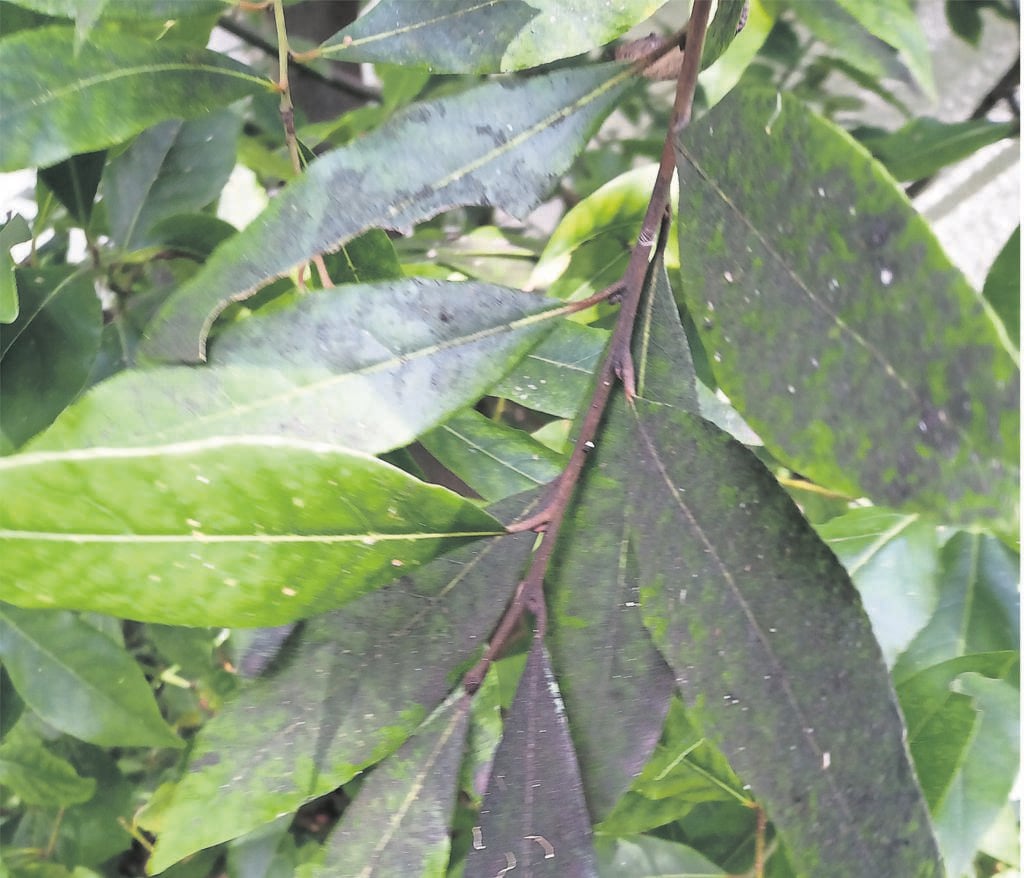
With only two more weeks to go before sooty mould season is officially over, many a gardener (and vehicle owner) is breathing a sigh of relief. But, in the slightly tweaked words of Arnold Schwarzenegger’s Terminator character, “It’ll be back”.
Sooty mould, also commonly known as mildew, is a black fungus that grows on the leaves of plants and trees (and the occasional car roof). For the fungus to thrive, it requires the honeydew excreted by aphids.
As a textbook (Aboriculture – Care of Trees, Shrubs, and Vines in the Landscape, Richard W Harris, 1983) explains: “Aphids live in colonies on fruit, roots and most plants at one time or another. Most species excrete large amounts of honeydew, which coats the host plants and often drips onto objects below. The honeydew attracts ants, flies and bees and serves as a medium for the growth of sooty mould fungus.”
In the Cape, that “one time or another” usually occurs from February to April.
Zahid Badroodien, Mayco member for community service and health, confirms that sooty mould is more prevalent in the late summer to autumn months (February to April). “During winter, many trees lose their leaves, resulting in the mould being washed off. Whereas most insects are more active in warmer months whilst trees are most stressed,” Badroodien says.
He adds that when trees are stressed, they normally become more susceptible to pests and diseases. “Stress is normally caused by summer heat and water stress, however, humans can also contribute to that by cutting and paving over trees’ roots.”
Badroodien says fewer cases were reported this year. “Probably because we had a good winter rainfall last year.”
Clare Burgess, chair of TreeKeepers, concurs that it seems to be less of a problem this year. TreeKeepers is a community group dedicated to conserving trees in the urban forest.
“TreeKeepers generally advocates for city dwellers to be more tolerant of the trees in their neighbourhoods. Take into consideration that trees are living entities and not everything will always be perfect. Sometimes there will be sooty mould, sometimes trees drop fruit and berries, but it is just one of those things we need to deal with. The benefits of trees far outweigh these temporary inconveniences,” she says.
Burgess says TreeKeepers has received many complaints from citizens in the green leafy suburbs where sooty mould tends to become a problem for residents when it affects their cars. “When it occurs in the garden, it tends to drip from a tree onto grass, other plants or garden furniture, where it is manageable and easy to deal with. But when it falls from trees onto cars parked in the shade underneath, that is when people get upset. This issue came to a head a few years back when the drought required restricted use of water and people couldn’t wash their cars or clean off the mould from their plants.”
Under the header “Treatment”, the 80s textbook states that there are a number of natural enemies that prey on aphids such as the larvae of green lacewings, ladybird beetles and syrphid (or hover) flies. If you don’t have any of these buzzing around, it suggests knocking aphids off infested plants with a spray of water. “Use a hose for a few small plants or a power sprayer for more numerous, large plants. A mild soap solution is more effective than water alone and will kill some of the aphids that may remain on plants,” the textbook reads.
It also proposes that gardeners try to control ants in the landscape, seeing that ants often domesticate aphids and use their honeydew as a source of food.
“Keep ants out of trees and shrubs by spraying the ground and the base of plants with Diazinon. Alternatively, band the trunks of trees and shrubs with a sticky material that traps crawling insects,” it states.
FYI, in 2004, the United States of America (USA) outlawed the residential use of Diazinon, a contact insecticide developed in 1952, when the Environmental Protection Agency determined that its ability to damage the nervous system posed a risk to human health (especially the health of children). Even more disconcerting, it was one of the most popular lawn and garden insecticides of all time, according to Google.
So while some of the ways to treat sooty mould have changed through the years, one thing remains constant – there is no easy way to treat it. Possible treatments, as shared by the City, at present include:
- Full cover canopy spray. A very expensive method that is harmful to the environment, insects, organisms and may also affect humans and animals.
- Tree injections. Another expensive method that is harmful to the tree, which may result in the tree tissue dying at the injection point and leading to early death.
- Application of systemic insecticide into the soil. These insecticides usually become absorbed into the plant as a whole. When the targeted insects feed on this plant, they ingest the insecticide and die. (Take caution when applying as this could be harmful to humans and animals).
According to Badroodien, due to the large number of trees under the care of the City’s recreation and parks department, the City only treats exceptional cases.
“The City’s department only uses systemic application in exceptional cases due to cost and impact on the environment. This substance is applied in the root zone of the tree and washed/leached into the soil with water.” Insects then feed on the tree and die. “Once the aphids are gone, the sooty mildew disappears,” he says.
What to do to treat mildew
Sooty mould is water-soluble and dissolves when washed off.
The City of Cape Town advises to aim jets or strong sprays of water at the tree canopy. Tough spots may be washed with mild dishwater liquid, and, if found on cars, with car shampoo. To improve the health of trees, the City says not to cut or compact the tree roots. Mild irrigation and light feeding will support the tree. Mulch the area under the canopy with 10 cm-thick organic mulch.
There is also a systemic insecticide available from garden shops and nurseries which residents can buy and self-apply (following all instructions and safety precautions) – the substance is toxic.
TreeKeepers does not advocate the use of poisons to kill insects as “it leads to further problems within the eco-system”.
Burgess says there are alternative treatments such as spraying with Neem oil. “But a better solution is to try and improve the health of your plants. A long-term solution will be to choose trees that are less prone to fungal attacks.”
Paul Barker of Barker Tree Care says it is an ant issue. Barker, who is also the horticulturist for the Friends of the Arderne Gardens , says he uses an organic spray of endophytic fungi and antifeedants. “Or a vascular injection in extraneous cases on massive old trees,” he says.




 Publications
Publications
 Partners
Partners
























